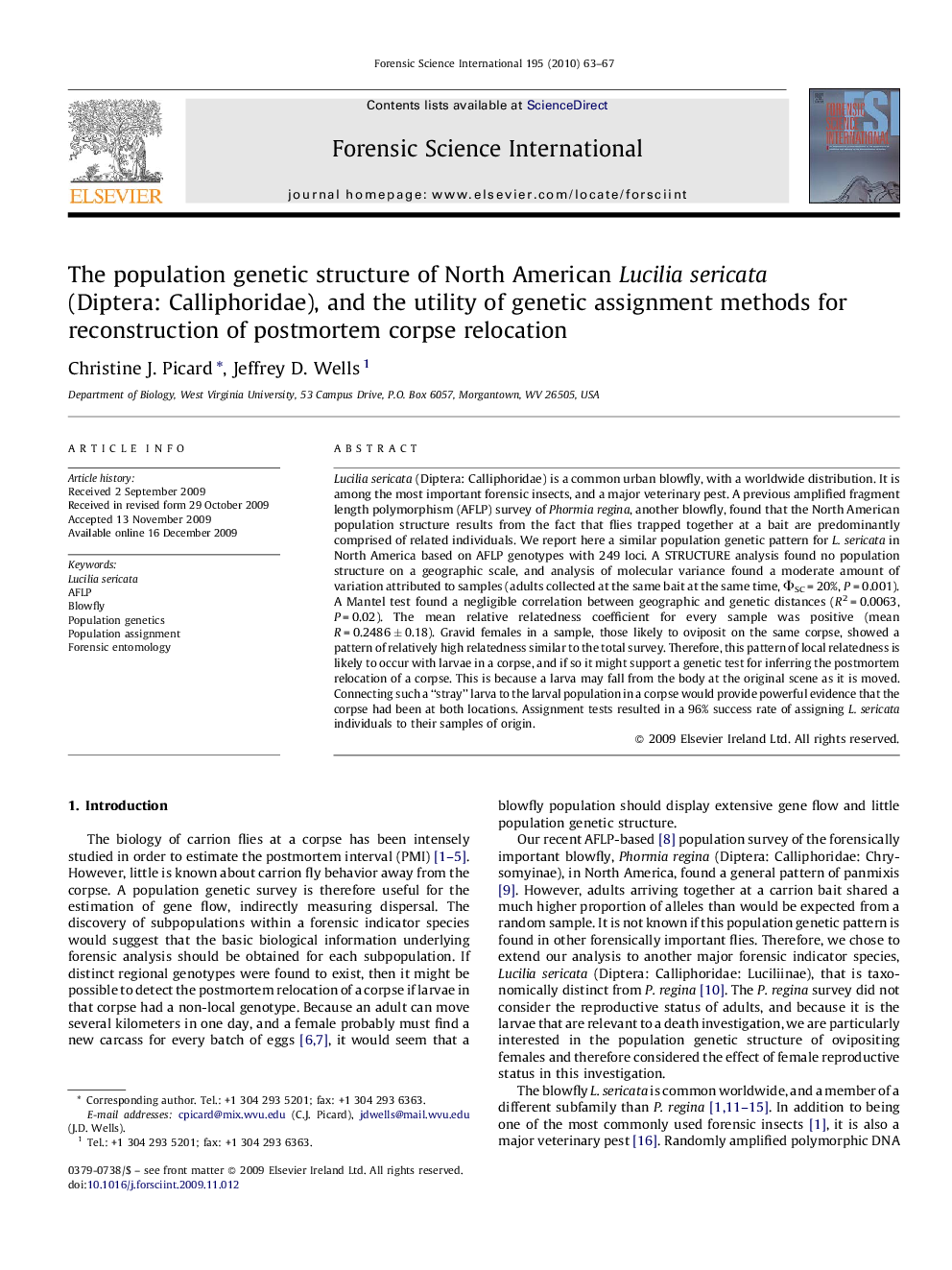| کد مقاله | کد نشریه | سال انتشار | مقاله انگلیسی | نسخه تمام متن |
|---|---|---|---|---|
| 97193 | 160484 | 2010 | 5 صفحه PDF | دانلود رایگان |

Lucilia sericata (Diptera: Calliphoridae) is a common urban blowfly, with a worldwide distribution. It is among the most important forensic insects, and a major veterinary pest. A previous amplified fragment length polymorphism (AFLP) survey of Phormia regina, another blowfly, found that the North American population structure results from the fact that flies trapped together at a bait are predominantly comprised of related individuals. We report here a similar population genetic pattern for L. sericata in North America based on AFLP genotypes with 249 loci. A STRUCTURE analysis found no population structure on a geographic scale, and analysis of molecular variance found a moderate amount of variation attributed to samples (adults collected at the same bait at the same time, ΦSC = 20%, P = 0.001). A Mantel test found a negligible correlation between geographic and genetic distances (R2 = 0.0063, P = 0.02). The mean relative relatedness coefficient for every sample was positive (mean R = 0.2486 ± 0.18). Gravid females in a sample, those likely to oviposit on the same corpse, showed a pattern of relatively high relatedness similar to the total survey. Therefore, this pattern of local relatedness is likely to occur with larvae in a corpse, and if so it might support a genetic test for inferring the postmortem relocation of a corpse. This is because a larva may fall from the body at the original scene as it is moved. Connecting such a “stray” larva to the larval population in a corpse would provide powerful evidence that the corpse had been at both locations. Assignment tests resulted in a 96% success rate of assigning L. sericata individuals to their samples of origin.
Journal: Forensic Science International - Volume 195, Issues 1–3, 25 February 2010, Pages 63–67